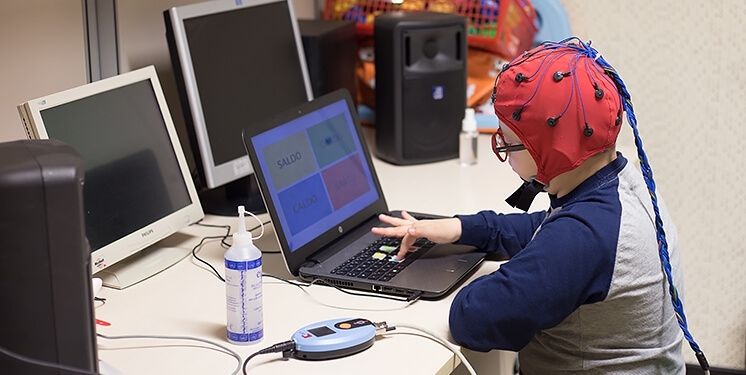Cochlear Workload

The fil rouge of the project is the effort to go beyond the measurement of the participants’ behavioral data of the performance, often impressive but not sensitive.
|
Funder: Cochlear Ltd Durations: 30 months |
The framework of the study is the clinical investigation of the neurometric underpinnings of the performances showed by patients in different task.
In particular, purpose of the research was to evaluate by electroencephalographic (EEG) cerebral effort indices in deaf participants:
- the effect of the variation of signal and noise source in relation to the participant in a word in noise recognition task (participants: cochlear implant users and unilateral deaf patients);
- the effect of the use of different processors and filtering options in a word in noise recognition task (participants: cochlear implant users).
Preliminary results on a reduced sample o children using a unilateral cochlear implant showed an increase in the EEG Workload index in correspondence of the most challenging noise conditioons. Further evidences in an adult sample showed lower Workload values during the trials when the more recent processor and the noise filter reduction were used.
PUBLICATIONS RELATED TO THIS LINE OF RESEARCH
- G. Cartocci, A. G. Maglione, G. Vecchiato, G. D. Flumeri, A. Colosimo, A. Scorpecci, P. Marsella, S. Giannantonio, P. Malerba, G. Borghini, P. Aricò, and F. Babiloni, “Mental workload estimations in unilateral deafened children,” in 2015 37th Annual International Conference of the IEEE Engineering in Medicine and Biology Society (EMBC), 2015, pp. 1654–1657.
- A.G. Maglione & G Cartocci et al. Cochlear implant features and listening effort induction: measurement of the mental workload experienced during a word in noise recognition task. Front. Hum. Neurosci. Conference Abstract: SAN2016 Meeting. doi: 10.3389/conf.fnhum.2016.220.00043


